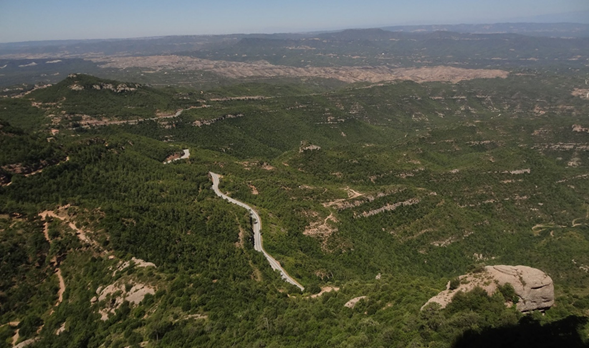Understanding wildfire risk as a component of the territory, in the Mediterranean the fire has been in our landscapes from centuries: by natural ignitions (lightings after storms), as a tool in rural areas (burning for cleaning the vegetation) and, more recently due to the land use changes, as a hazard (high intensity fires burning all forests in large surfaces). This last “bad face” of fires is being exacerbated by climate change, increasing the availability of landscapes to burn.
One of the main worries in parallel with the forest conservation is the potential impact of those extreme fires on citizens and houses and, therefore, how to improve the civil protection during the emergency. How to live with wildfire risk under a climate change context in a sustainable manner?
Within the pilot site situated in el Bruc municipality (Catalonia, Spain), an integrative approach will be developed, aimed at optimising the synergies between prevention, preparedness, response and recovery actions, tackling together not only the physical but also the social vulnerability reduction. This will offer a frame where the activities of the territory are embedded into the Risk Management Cycle from a cost-efficient and resilient community perspective.

The municipality of el Bruc has a complex territorial diversity since it includes different elements as the Montserrat Mountain and Roques Blanques Natural Parks, an infrastructure network with different typologies (highways, railways, other roads, etc.), different types of settlements (WUI, urban sprawl, town centre, etc.), diverse land uses (forest, crops, urban, industrial), more than 2.000 inhabitants, touristic areas and attraction, and a territory with a high wildfire risk, affected by fires (Figure 1).
On that sense, community involvement is a crucial issue considering the exposed population as a proactive actor of the Disaster Risk Reduction strategies. This pilot site will serve to adapt successful participatory approaches developed in other countries (e.g., Firewise USA® or Safer Together approach in Australia) to the regional conditions. This integrated and bottom-up approach will serve to deliver operational recommendations for risk reduction considering all the legal, financial, social and cultural components, and to enhance the risk governance in the territory in a sustainable manner.
The pilot site is currently developing two actions, running in parallel:
- Support tool for an integrated wildfire risk assessment and planning. A landscape and wildland urban interface (WUI) scale of application. The aim is to develop a strategic and integrated analysis in a specific territory with the objective to stablish synergies and optimise the cost-efficiency of risk mitigation measures.
- Reinforcement of risk awareness. Wildfire Preparedness Day organization. With the aim to boost community participation, understanding the exposed population as a proactive stakeholder in the Disaster Risk Reduction strategies.
Different field visits have been done in order to identify and better recognise the elements at risk in the municipality. At the same time, it was developed a risk culture exercise with children.



Source: Forest Science and Technology Centre of Catalonia (CTFC)








